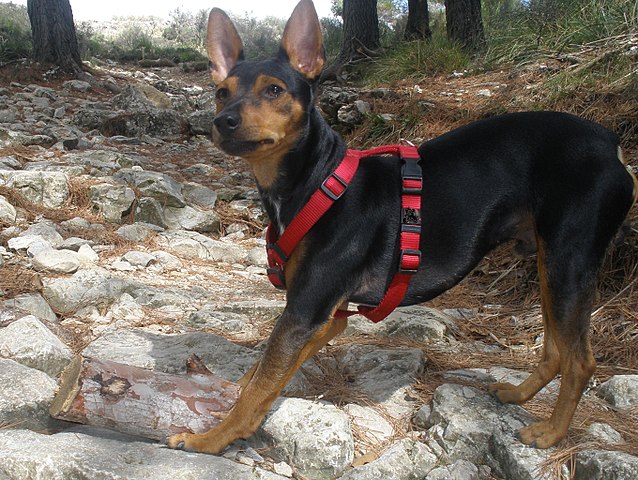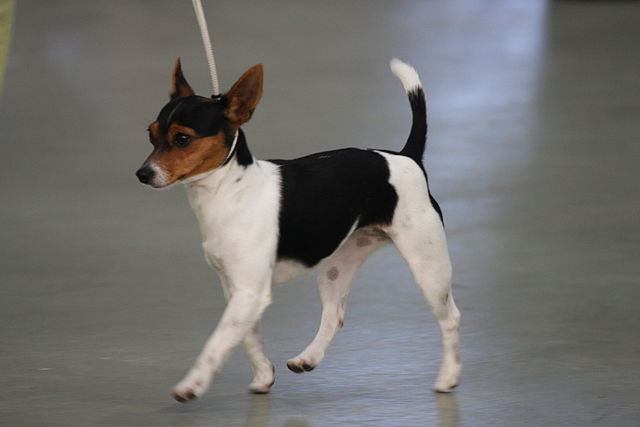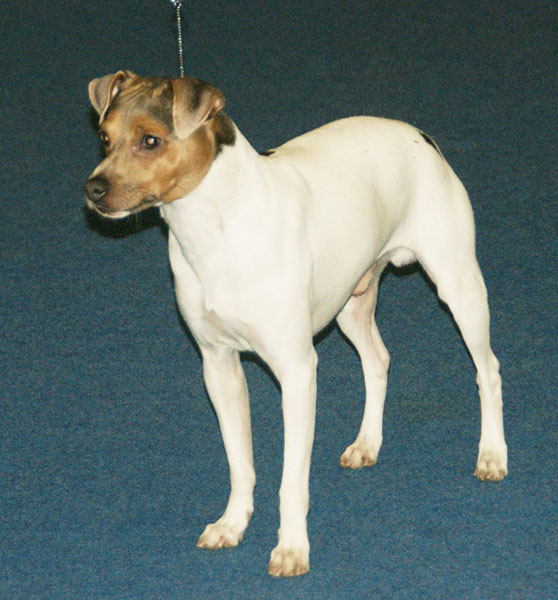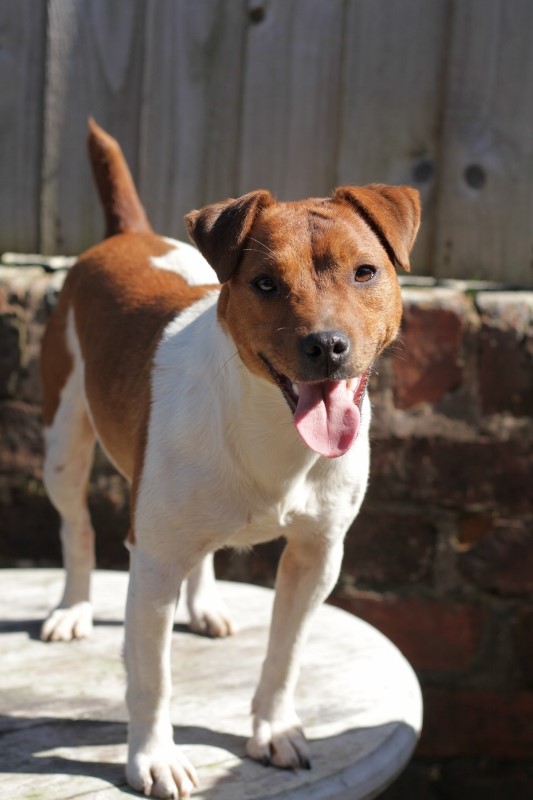The Bull Terrier is, above all, a clown! Many have described his playful personality as that of a tireless entertainer, or even like a “toddler in a dog suit”. Potential owners – take note! A good match for the Bull Terrier is an owner who is patient and has enough energy to manage this active bull-and-terrier breed. Although he is loyal, he is also mischievous and will keep you on your toes! Despite his stocky and somewhat intimidating appearance, he is exceptionally friendly to all.
The Bull Terrier usually gets along with children although supervision is often required. Since this medium-sized breed is stout and muscular, while also possessing high energy, it is easy for them to topple small children over while playing. This is true even if they receive a lot of exercise (which they need daily). It can be difficult to wear out a Bull Terrier, which means they simply bounce around too much to be safe unsupervised with smaller kids. Many people are surprised at just how athletic and lively these dogs are! It is not abnormal for them to spring over the back of the couch in a single bound from the floor! Older Bull Terriers will eventually settle down somewhat, but it may take many years.
If raised with enough mental and physical stimulation, Bull Terriers aren’t generally a noisy breed. They will bark if necessary, such as if someone comes to the door, but won’t otherwise raise a ruckus. Most dogs that do bark constantly are usually doing so because they are bored and are not being given enough exercise. Under-exercised Bull Terriers can develop all sorts of neurotic behaviors – not only barking, but destructive chewing and even OCD traits. If your Bull Terrier loves to chew, the long-lasting Benebone is built to handle even the toughest jaws – https://amzn.to/410F5TG
It should be noted that although Bull Terriers can make good watch dogs (alarm barkers), they usually aren’t guard dog material and would prefer to instead greet any would-be intruders!
As with many related breeds, unfortunately the Bull Terrier doesn’t always get along with other dogs. Full of fire and tenacity, a Bull Terrier won’t always start a fight but if provoked, they won’t back away either. Many owners find it very hard to house two males together, especially if both are un-altered. Early socialization from puppyhood could lessen the chances of dog-to-dog aggression, but it is never a sure thing with this breed. Cats and other small animals are equally at risk. Bull Terriers usually do best as only pets. 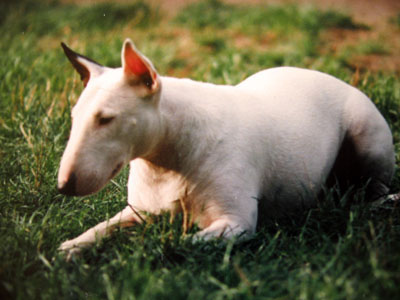
Bull Terriers are very easy to groom and require little care, although they do shed seasonally. Their smooth coat only needs to be brushed once or twice a week, and baths given only when they get dirty. Once a month is usually the most frequent a Bull Terrier will need to be bathed, and only then if they tend to roll in dirt! They do better in warm climates, but will gladly take a walk in cold weather if provided with a coat!
The Bull Terrier can tend to be stubborn when it comes to training. Becoming “suddenly deaf” when given a command is a tactic used by many members of the breed. This is not to say that Bull Terriers aren’t intelligent – they are actually incredibly innovative and creative! They would just rather make the rules themselves than their owners. This is the reason why obedience is an absolute must for this powerful breed! Firm handling, combined with fairness and a good degree of positive reinforcement is key. It also makes sense to start the training while they are still young – right along with housebreaking (which can also be difficult with these guys).
When outside, it is a good idea to supervise the Bull Terrier if the fence isn’t very secure. The breed is known for digging out and roaming the neighborhood, which can be very dangerous. Securing the bottom of the fence is another alternative. A medium-high prey drive combined with a strong will means that they are also best kept on leash unless in a securely fenced area. Because the breed has been unfairly banned in some parts of the world, it is of utmost importance that each individual Bull Terrier be an ambassador. Owners face extra responsibility to make sure their dog is well-behaved and never allowed to wander. This will set a good example and begin to break the prejudices that exist.
As long as they are exercised frequently, the Bull Terrier can live happily in an apartment. A best-case apartment scenario ideally involves an owner that works from home (Bull Terriers hate to be alone), who walks the dog on a leash several times a day and gives the dog plenty of attention and regular training. This isn’t a breed to be treated like a piece of furniture – they take a lot of work! This is also why they aren’t normally the best match for a first-time dog owner. Crate training is very important with the Bull Terrier. Clever and curious, they can and will get into everything while you are gone (at least while they are young). Many a Bull Terrier has eaten something they shouldn’t have and had to be rushed to the ER in order to remove it! Owning a Bull Terrier can be akin to having a toddler – they must be supervised or crated! Get the best value for your money with the durable and affordable Petmate Vari Kennel – https://amzn.to/3B3CUE6
Affiliate Disclaimer
As an Amazon Associate, I earn from qualifying purchases. This means that if you click on an affiliate link on this site and make a purchase, I may earn a small commission at no additional cost to you. Rest assured that I only link to products I have used, or use on a regular basis, and trust enough to recommend them to you!
